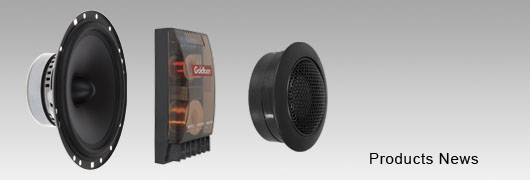
Differences in Tweeter Technology
Top-notch tweeters are capable of relaxed, airy signal reproduction that transcends listeners and emotionally connects them to music or movie. Here’s a look at some pros and cons of the major tweeter types called on to reach those sonic highs:
Dome
Villchur’s invention is still the most common tweeter type; probably about 95 percent of all speaker systems use dome tweeters. This tweeter is very well developed and are easy to manufacture and they are mass-produced, mostly in China.
The design features a dome with integral suspension and aluminum wire voice coil attached to the rim. This moving piece is then mounted on a plastic frame and positioned in a ring magnet motor system. A faceplate is installed from the top. (A shallow waveguide or small horn can be used instead of a faceplate to control directivity, response and/or increase sensitivity.)
Dome tweeters have very smooth response, good dispersion, and average sensitivity. Some designs employ ferrofluid (a viscous emulsion of magnetic particles in mineral oil) in the magnetic gap around the voice coil to improve cooling and to boost power handling. While it has clear benefits, it also introduces additional dampening and potential long-term issues related to fluid thickening, and many top designs avoid ferrofluid.
A good dome tweeter can be made for a manufacturer’s of about $5, though some high-performance tweeters from companies like Scan-Speak and Dynaudio can cost as much $300 to $400 on a retail level.
Electrostatic
Instead of being driven by electro-dynamic force applied to a voice coil that carries signal current and immersed in a magnetic field, electrostatic speakers rely on an electrically-charged diaphragm.
An electrostatic speaker has a thin (6-12 microns) polyester film diaphragm that’s coated with an electrically conductive layer with high resistance that provides a constant surface charge. The diaphragm is tensioned on a frame positioned between two stators.
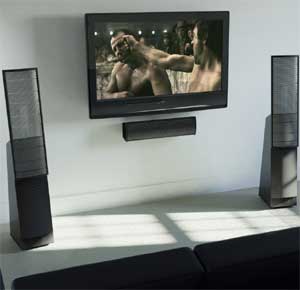
The stators are made of a perforated metal coated with an insulating layer, and an extra high voltage (EHT) source creates a bias voltage between diaphragm and stators. When an audio signal is applied to stators through step-up transformer, the bias voltage is modulated and the diaphragm vibrates between stators driven by electrostatic force.
Electrostatic tweeters and speakers have some important advantages that allow them to reach extremely high levels of performance and realism. The diaphragm is extremely light and responsive, it uses voltage instead of current and it does not produce heat. They also don’t have distortion related to cone and dome break-up resonance, voice-coil inductance, and non-linearity and magnetic field modulation that are detrimental to sound quality in electro-dynamic drivers.
However, there are also attributes that limit them to mostly high-end stereo. First, they need external high voltage supplies that plug into wall outlets. Second, their diaphragms have to be large to get a reasonable sensitivity. That size works against wide and constant dispersion, and this is a serious problem especially at high frequencies. Electrostatic technology’s sensitivity to dust accumulation, humidity and other factors is also a consideration.
Piezo
Tweeters that employ piezo technologies have only been used on a limited basis. The main advantage is that they are very inexpensive and they do not require a crossover. They are resonant transducers
The most widely used piezo tweeter has a thin (0.1 mm) piezo ceramic disc of about 1 to 2 inches (25-50 mm) in diameter, bonded to an aluminum or bronze disk of slightly larger diameter. When voltage is applied, the piezo disc expands and contracts (changing its diameter on a very small scale).
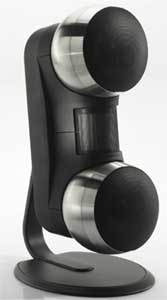
A metal substrate rigidly bonded to the disc transforms tensile and compressive deformation into bending deformation, and the bending disc vibrates and radiates sound. A small-diameter (1.5-2 inch) paper or polymer bonded by its apex to the center of the piezo transducer can be added to increase sensitivity. A cone can also be added by loading it with a horn to further increase sensitivity.
Piezo tweeters are not high fidelity tweeters and are mostly used in inexpensive combo and car stereo systems (mostly with just piezo disc) and some commercial speakers. Motorola has been the most frequent supplier of piezo tweeters to the commercial market.
Plasma/Ion
This exotic transducer is based on the principle of modulating ionized plasma by using the audio signal.
Plasma can be generated either by gas ionization by high-voltage electric fields (corona discharge) or by burning gas at a very high temperature. Plasma speakers have the shortest path from electric signal to oscillating air - it happens directly. There isn’t even a small diaphragm like in electrostatic or ribbon speakers, the response is immediate and there is no distortion related to mechanical or electromagnetic components.
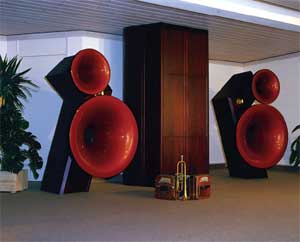
One could argue that plasma tweeters are the closest design to ideal tweeter. The sound of plasma tweeters is exceptionally transparent and free from any apparent distortion. However, the price of an Acapella plasma tweeter, for example, is about $9,000 each, and they are not environmentally friendly.
Ribbon
This has a very thin, pleated aluminum foil diaphragm between two magnetic poles to the left and to the right. The diaphragm is very fragile and about 20 to 30 microns thick. It’s about 2 to 3 inches long and 1/2-inch wide. It looks like a ribbon, and the diaphragm is a current conductor.
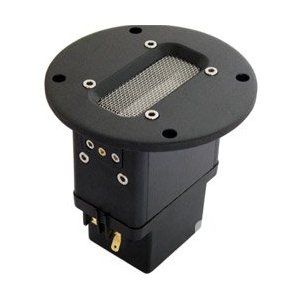
Signal current passing through the diaphragm makes it vibrate. Ribbon tweeters have been known for extremely airy and transparent sound. The absence of voice coil inductance, its mostly linear magnetic field and its extremely light diaphragm all contribute to exceptional sound quality.
Ribbon tweeters are expensive, they require transformers for impedance matching and their aluminum ribbon is fragile and prone to sagging with time, which may result in response deterioration.
Air Motion Transformer (AMT)
Using a folded thin film diaphragm with aluminum conductors that are formed similar to an accordion squeezebox, this tweeter’s diaphragm is placed between opposing magnets. When signal current is passed it starts oscillating in the plane of the diaphragm with folds contracting and expanding and thus squeezing air in and out.
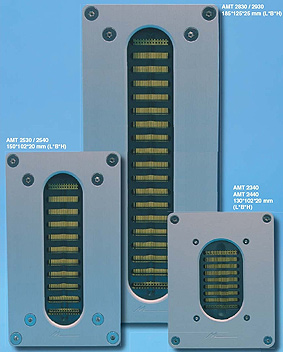
AMT drivers are relatively complex and expensive to manufacture, and in the case of units with extended operating range down to 1kHz, they are bulky. They do possess all the advantages of transducers with light diaphragm and flat voice coils with negligible inductance, producing a very transparent, natural sound.
Planar Ribbon (planar-magnetic, ribbon, magnetostatic, isodynamic)
Planar ribbon tweeters have been experiencing a surge of popularity in the high-performance market. New Neodymium magnets and high-tech PEN and polyimide (Dupont’s brand names Teonex and Kapton) materials are facilitating new designs with high sensitivity, robust field operation and cost-effective manufacturing. In planar ribbon tweeters, a thin diaphragm consisting of foil/film laminate with etched flat conductors is stretched and positioned between high-energy magnetic systems.
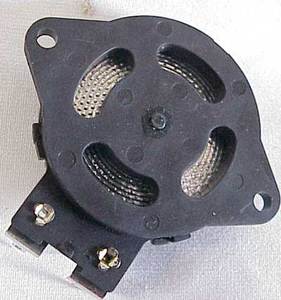
Planar ribbon drivers possess all the benefits of thin film “zero” inductance tweeters, including electrostatic. They produce transparent, natural sound and are relatively easy to manufacture at a reasonable cost. They also offer high sensitivity up to 103dB/1m/1W with some pro devices, and they can be made small without sacrificing output.
Planar ribbon tweeters do not require any matching transformers or wall outlet power. Their diaphragm is very robust and weather resistant. Unlike other thin film tweeters planar ribbons’ form factor ideally suits contemporary trends in the loudspeaker market and are very design and application “friendly.”
Use of this site signifies your agreement to the Terms of Use.


